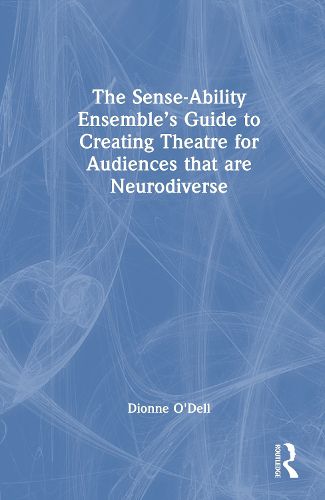Readings Newsletter
Become a Readings Member to make your shopping experience even easier.
Sign in or sign up for free!
You’re not far away from qualifying for FREE standard shipping within Australia
You’ve qualified for FREE standard shipping within Australia
The cart is loading…






The Sense-Ability Ensemble's Guide to Creating Theatre for Audiences that are Neurodiverse is a practical handbook that explores how to create theatre for audiences that are neurodiverse.
This book explores the journey of the Sense-Ability Ensemble in its quest to create theatre from the ground up for audiences that are neurodiverse. It demonstrates how to embark on this work, and how to move from a sensory-friendly model that adapts work to make it inclusive to a model that designs work with this specific audience in mind.This is accomplished through highlighting recommended practices, such as using live music, puppetry, and one-on-one audience member/actor interaction, exploring design considerations, sensory engagement, length, actor/staff training, non-linear storytelling, and the use of social narratives, as well as partnering with special education and occupational therapy professionals. It also offers practical suggestions for touring this theatre model, providing sample forms and methods of communication.
Part case study, part how-to guide, this book will be of interest to theatre educators, practitioners, and students enrolled in courses on children's theatre, devising, applied theatre, theatre for young audiences, and drama in education.
$9.00 standard shipping within Australia
FREE standard shipping within Australia for orders over $100.00
Express & International shipping calculated at checkout
Stock availability can be subject to change without notice. We recommend calling the shop or contacting our online team to check availability of low stock items. Please see our Shopping Online page for more details.
The Sense-Ability Ensemble's Guide to Creating Theatre for Audiences that are Neurodiverse is a practical handbook that explores how to create theatre for audiences that are neurodiverse.
This book explores the journey of the Sense-Ability Ensemble in its quest to create theatre from the ground up for audiences that are neurodiverse. It demonstrates how to embark on this work, and how to move from a sensory-friendly model that adapts work to make it inclusive to a model that designs work with this specific audience in mind.This is accomplished through highlighting recommended practices, such as using live music, puppetry, and one-on-one audience member/actor interaction, exploring design considerations, sensory engagement, length, actor/staff training, non-linear storytelling, and the use of social narratives, as well as partnering with special education and occupational therapy professionals. It also offers practical suggestions for touring this theatre model, providing sample forms and methods of communication.
Part case study, part how-to guide, this book will be of interest to theatre educators, practitioners, and students enrolled in courses on children's theatre, devising, applied theatre, theatre for young audiences, and drama in education.